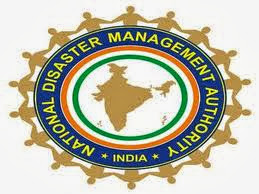Though India's Disaster Preparedness still flounder in its response to earthquakes and cloudbursts, it has made considerable headway in relation to cyclones and tsunamis. The response to the recent Andhra-Odhisa Cyclone is a testimony to this. If in 1999 Super Cyclone, the death toll was around 10,000, this time it should be contained within single digits. Much of the credit to improvement in the country's disaster preparedness could be taken by the Congress and the UPA governments.- Odisha's then Congress government had set up its own Odisha State Disaster Management Authority and Odisha Disaster Rapid Action Force (ODRAF) soon after the 1999 disaster.- On 23 December 2005, the UPA enacted the Disaster Management Act, which envisaged the creation of the National Disaster Management Authority (NDMA), headed by the Prime Minister, and State Disaster Management Authorities (SDMAs) headed by respective Chief Ministers, to spearhead and implement a holistic and integrated approach to Disaster Management in India.- The creation of the National Disaster Response Force (NDRF) in 2006 by the UPA further ensured that there were around 2,300 personnel, especially trained in disaster mitigation and response, available for deployment, along with equipment like inflatable boads, lifebuoys and power saws.- Doppler radar is in place at Bhubaneswar, giving out precise coordinates in terms of geographical spread, intensity and timing of cyclones. This enables early alerts to the local authorities and wider dissemination of cyclone warnings in the vulnerable areas, facilitating timely evacuation of people likely to be affected.- The cyclone shelters have been built under the Centre and NDMA's National Cyclone Risk Mitigation Project, a World Bank-assisted initiative. These two-storeyed structures can withstand windspeed up to 300 km per hour and moderate earthquakes. However, this capacity could have hardly adequate to accommodate over 800,000 evacuees. This was made possible by the strategy of National Cyclone Risk Mitigation that augmented heavily its standalone cyclone shelters with government schools which backs up as temporary cyclone shelters during an emergency. During UPA I&II tennure marked the rapid expansion of government schools in rural areas, particularly in backward states like Odisha.- The massive evacuation authorities may not have been possible but for the relentless efforts of the local administration. A local official said when some of the villagers refused to leave their houses, the authorities even went to the extent of threatening them with detention and arrest, ensuring immediate compliance.- Last but not least, the electronic media boom and 24x7 news coverage created awareness well before its landfall.
Sunday, October 13, 2013
If the country's disaster preparedness have remarkably improved, thank the UPA...
Subscribe to:
Post Comments (Atom)

Great stuff from you, man. Ive read your stuff before and youre just too awesome. I love what youve got here, love what youre saying and the way you say it. You make it entertaining and you still manage to keep it smart. I cant wait to read more from you. This is really a great blog.
ReplyDelete